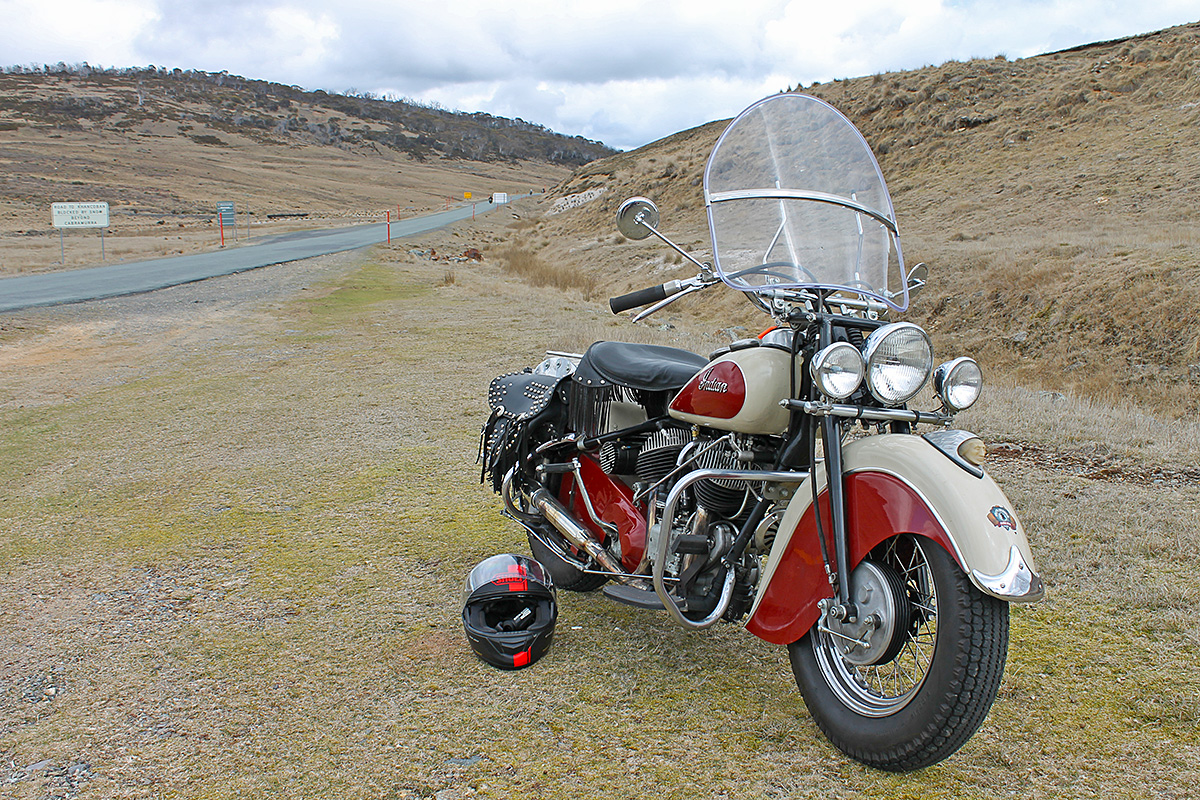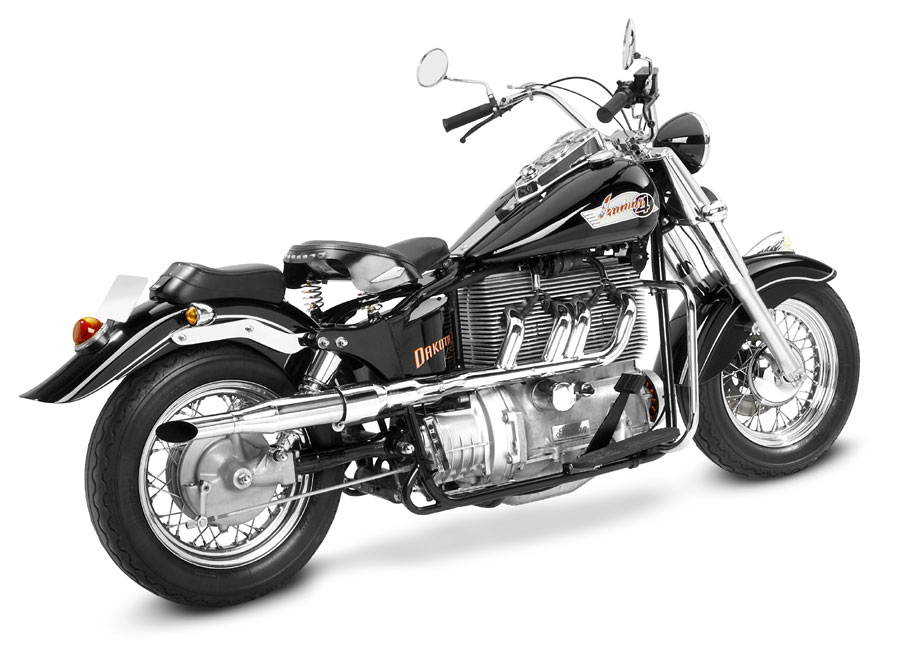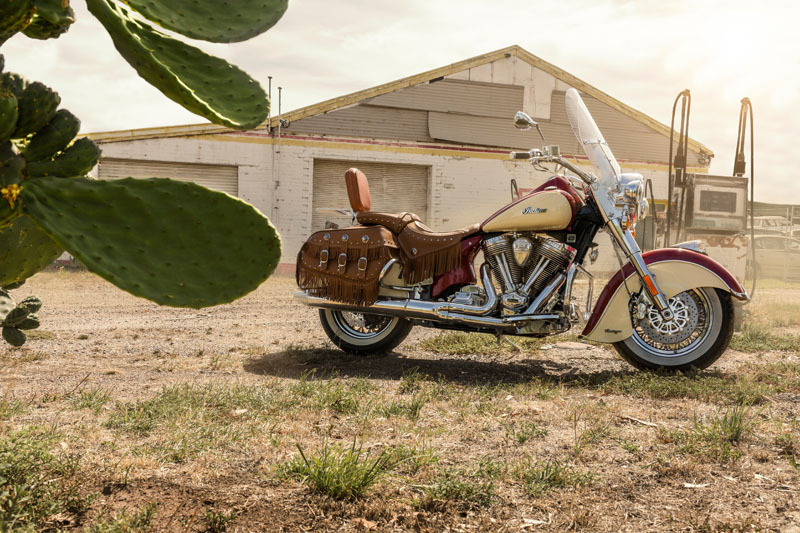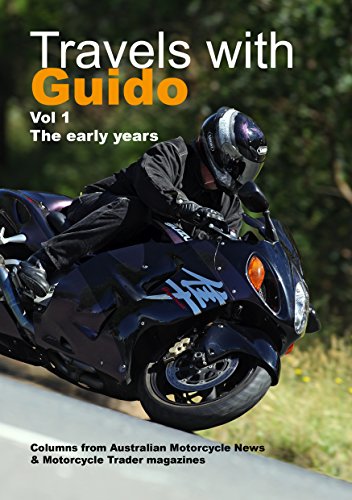Motorcycle Investor mag
Subscribe to our free email news
Brockhouse Indian Chief
(Story & pics by Guy 'Guido' Allen, July 2023)
The sometimes troubled history of
Indian motorcycle throws up some fascinating oddballs,
like this 1959 Brockhouse Indian Chief
So
here’s a question: What’s an Indian motorcycle? If you
answered something along the lines of a big American
V-twin, you’d be right in 99 per cent of cases. While
there’s an attraction in focusing on what has been the
core product from the marque, it means you miss out on a
hell of a lot of other interesting machinery.
Here's
an example: Steve Higginbotham’s Royal Enfield Chief,
aka a police Chief, which we tracked down through the Iron Indian Riders club.
Built
in 1959, it’s a particularly rare variant in this
country – he figures this may be the only one from that
model year. “This frame was purpose built for America,”
he says, “And is the only frame to come out of RE that’s
like it.”
This
comes from a period when Indian Springfield had
collapsed and the brand was now owned by Brockhouse
Engineering (see timeline below). That company built a
number of smaller models under the name and its main
business was the Royal Enfield-based machines from 350
through to 700cc. Most were relatively
lightly-customised versions of the English singles and
parallel twins.
Based
on the 700 Meteor or Constellation twins, Steve’s bike
has a number of unique parts that suit it to police
service. The most obvious is the sprung seat (which
Steve has modified and set up to his own tastes), but
there are others such as the toolkit and a number of
unique brackets.
Steve
says one of the things that attracted him to the bike
was that it’s substantially lighter and easier to manage
than a Springfield Chief – a significant bonus when, as
he says, you weigh not a whole lot more than a jockey.
The
engine is effectively two Bullet pistons mated to a
development of the earlier 500cc twin engine, with a
monster 25kg flywheel. He reckons it’s a surprisingly
good package.
That
package is backed up by an old M-series four-speed
Albion gearbox, specially modified in places for the
intended service.
Bought
from Jon Munn at
Classic Style, the bike has received a lot of TLC
over time. Paint, electrics, wheels and trim have all
been upgraded or rebuilt, as has the transmission. Steve
is a bit tempted to strip down the engine to cure a
minor oil leak, but it’s running well so he may decide
to leave it alone.
A lot
of mystery surrounds the career of this model. “It’s
built by Royal Enfield,” he says, “But nobody seems to
know whether it was finished in America or the UK. It
has unique badges and a USA speedo.”
It’s
also uncertain whether the model actually made it on to
the streets as a cop bike. Steve says he’s found
advertising and brochures for the police special, but
has yet to see a photograph of one in active service.
The
16-inch wheels are unique to this model, more closely
reflecting what you would find on period Harleys.
So
what’s it like behind the handlebars? “It’s beautiful to
ride,” says Steve, “Well balanced, smooth acceleration –
it moves along pretty well.”
WHAT INDIAN IS THAT?

Indians are often
described by their place of manufacture, for example
Springfield or Gilroy, as a shorthand for saying which
generation and factory they belong to. The lineage is
this:
Springfield 1901-1953 (1947 model shown above)
Gilroy 1999-2003
Kings Mountain 2006-2011
Spirit Lake 2013 (for the 2014 model year) to present.
There were other bikes
carrying the Indian name sporadically produced between
1953 and 1999, and they were generally rebadged British
machines from the likes of Royal Enfield and even
Velocette.
The timeline runs like
this...
INDIAN DATES
1901 – Indian Motorcycle Company, founded by
George Hendee and Carl Hedstrom, produces its first
prototype. It was a 1.75hp single, produced in Hendee¹s
home town of Springfield, Massachusetts.
1930 – Merges with duPont Motors.
1945 – Sold to Ralph Rogers and the Atlas Corporation. The company swings its attention to lighter motorcycles.
1953 – Indian ceases production. The rights to the name are bought by Brockhouse Engineering, which sells re-badged Royal Enfields.
1963-1970 – Floyd Clymer produces a wild variety of machines under the Indian name, though it¹s doubtful he held the rights to it.
1999 – After much bitter court wrangling, an amalgam of nine companies becomes the Indian Motorcycle Company of America, producing out of Gilroy, California.

2000 – The rights to the Swedish-designed four-cylinder Viking cruiser are bought by English musician Alan Forbes, who then owned the British rights to the Indian name. Hand-built production of the design (which replicates an historic inline Indian 4) begins, badged as an Indian Dakota (above).
2003 – Gilroy shuts down, in September.
2008 – A new Indian Motorcycle Company, backed by British finance group Stellican (which also revived historic boat brand Chris-Craft), buys the Gilroy design and starts production of an updated version (below) at Kings Mountain, North Carolina.
2011 – Polaris, maker of Victory brand cruisers, buys Indian in America.
2013 – Production of the
Polaris machines begins, for the 2014 model year, at
Spirit Lake, Iowa.

See the 2009
Kings Mountain Indian in our shed.
-------------------------------------------------
Produced by AllMoto abn 61 400 694 722
Privacy: we do not collect cookies or any other data.

Archives
Contact




